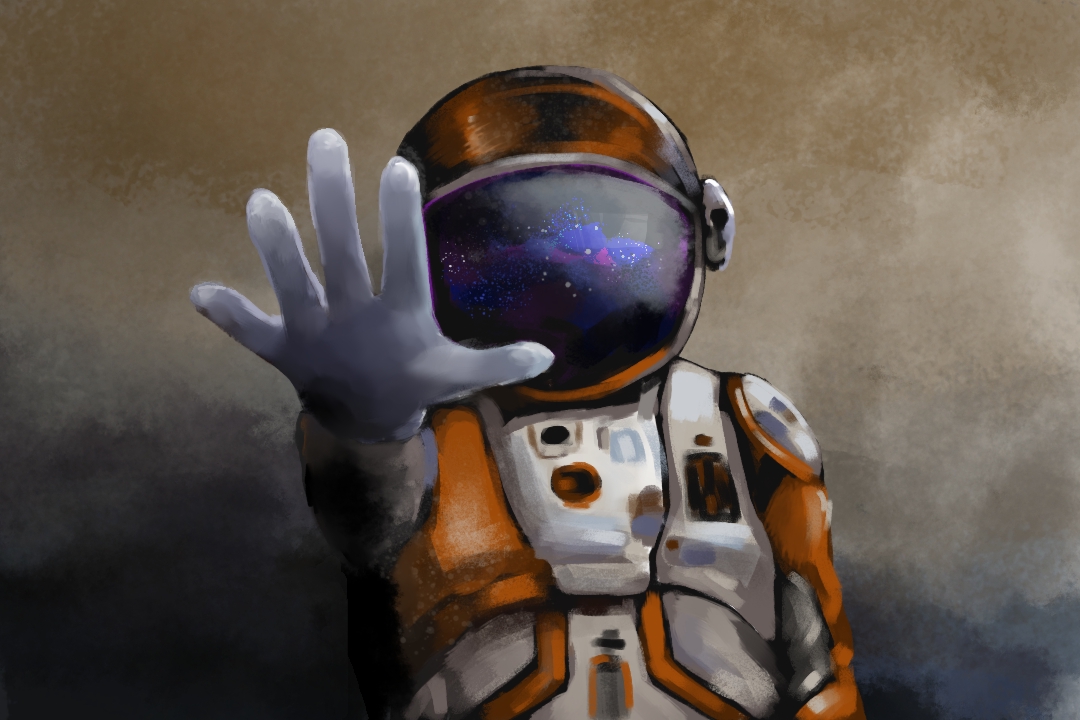Imagine you are stuck on Mars — alone, with little food and water and no means of communication. In Andy Weir’s debut science fiction novel, The Martian, we follow astronaut Mark Watney and his harrowing journey of surviving on Mars after an accident leaves him stranded alone on the planet with no way to contact Earth.
In the novel, the National Aeronautics and Space Administration (NASA) sends a six-person crew on the Ares III mission — the third of five planned missions to put humans on Mars for research. After a sandstorm forces Watney and the rest of the crew to launch their evacuation protocol, Watney gets hit — and impaled — by a flying object and is thrown away from the rest of the crew. Though they search as much as possible before the storm becomes too intense to escape, the last reading from Watney’s suit biometrics system indicates his vitals are zero, and ultimately the rest of the crew are forced to leave, believing he’s dead.
To understand why this evacuation had to occur, readers must understand key pieces of equipment. The first is Hermes, the ship that carried the crew from Earth. Hermes is a technologically advanced ship designed to get astronauts to and from Mars in 124 days, all while shielding them from deadly space radiation. Hermes itself, however, doesn’t touch down on Mars. To get to the surface of Mars, the Ares III crew needs to cross the distance in a small pod.
Once on the planet, they live in the “Hab,” a climate-controlled, oxygen-supplied habitat that serves as their home for the next 30 days. The last piece of equipment is the Mars Ascent Vehicle (MAV). The MAV is a tall, somewhat cylindrical structure with a tapered nose, susceptible to tipping in exceedingly high winds. To be precise, 150 kilometres per hour is the speed at which the crew has to evacuate so that the MAV doesn’t tip. The MAV is the only piece of equipment capable of transporting the crew back to Hermes so they can return to Earth. If the MAV is damaged, or tips, they’re stranded.
Watney was one of six astronauts making up the Ares III mission. Each of the crew had a specific role and specialty — all of which were crucial to the success of the mission. Mark Watney served as the crew’s botanist, though he was also educated as a mechanical engineer, which comes in handy throughout his time alone on Mars.
In fact, Watney’s multidisciplinary skill set plays a crucial role in his ability to survive. As a botanist, his role was to evaluate the potential of growing crops on Mars — a necessity if humans were ever to live on Mars for extended periods of time. Capitalizing on this knowledge, Watney manages to create a successful potato ‘farm,’ extending his survival for several months more than what the remaining rations would have allowed. As an engineer, he’s more than capable of repairing equipment that’s damaged by what can only be described as his brilliant and sometimes crazy ideas. For example, Watney accidentally blows up part of the Hab while attempting to make water from scratch by reacting oxygen and hydrogen.
The majority of the book is told from Watney’s perspective as he reads from logs that he keeps in the Rover’s computer. Interspersed with the incredibly personal and witty scenes of his time alone on Mars are scenes from NASA back on Earth. Once they discover that Watney is still alive, a frantic, multimillion, multinational effort is launched to rescue him before it’s too late.
Watney faces impossible odds and stays alive for months alone with scarce resources, damaged equipment, and no immediate way of contacting Earth. He shows extreme psychological strength, not once succumbing to the daunting task he faces, and remains good-humored. Take, for example, how he celebrates when he grows crops on Mars: “In your face, Neil Armstrong!”
The Martian is technically considered an accurate sci-fi story. It pushes the boundaries of science fiction and reality just enough that the plot remains plausible in the reader’s mind. Weir acknowledges that a ton of research and rechecking of math went into the book. And although it is not yet possible to practically prove the events of the novel, current research supports the theory that potatoes could be sown on Mars. Overall, the novel is full of detailed science, yet it wouldn’t at all be a heavy read for those without a science background.



No comments to display.